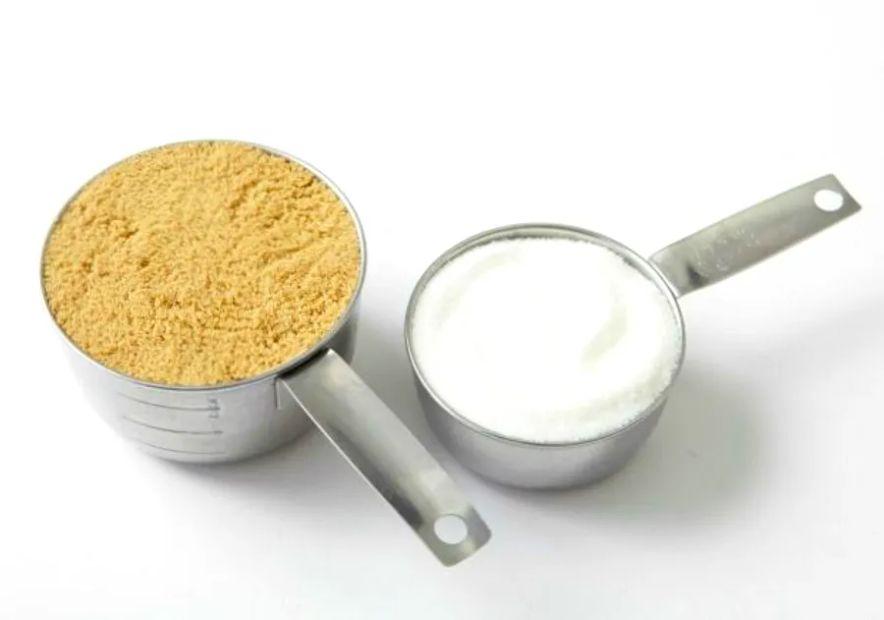What’s the Difference Between Sugar-Free, No Sugar Added, and Unsweetened Labels?

Decoding food labels can be confusing, especially when terms like "sugar-free," "no sugar added," and "unsweetened" all seem to imply the same thing. When shopping, you might think you can pick any of these products interchangeably, but each label actually has a distinct meaning.
The U.S. Food and Drug Administration (FDA) enforces strict rules about what food labels must include, but some claims, particularly marketing terms like "lightly sweetened" or "all natural," aren't as tightly regulated. So, can you trust these labels to make healthy choices? Often, the answer is no. Let us explain.
If you’re watching your sugar intake or have been recently diagnosed with prediabetes, it’s a good idea to get familiar with the various sugar-related claims on food packaging. And remember, most foods can still be part of a healthy diet if consumed in moderation.

America's Sugar-Heavy Diets
The typical American eats around 17 teaspoons of sugar daily, which is well above the recommended amount—about 12 to 13 teaspoons in a 2,000-calorie diet, according to Isabel Maples, MEd, RDN, spokesperson for the Academy of Nutrition and Dietetics.
In 2016, the FDA updated food labels to separate Total Sugars from Added Sugars. Before this change, it was hard to tell where the sugar was coming from. For example, a candy bar and a fruit smoothie might have similar total sugar amounts, but one is packed with sugar from candy, caramel, and nougat, while the other comes from fresh fruits, dairy, and vegetables.
Early research suggests that the new Nutrition Facts labels are helping people make healthier choices. However, the labels don't always clarify every sugar-related claim. Let’s clear up some confusion about sugar labeling.
What Does Sugar-Free Mean?
According to the FDA, "sugar-free" means that a single serving of food contains less than 0.5 grams of added or naturally occurring sugars. Naturally occurring sugars are those naturally present in the food, such as fructose in fruit or lactose in milk, says Maples.
Other labels you may see that mean "sugar-free" include "free of sugar," "no sugar," or "zero sugar." However, these products may still contain artificial sweeteners like Splenda or NutraSweet, or sugar alcohols such as mannitol or sorbitol. Common sugar-free items include diet sodas and sugar-free candies for diabetics.
What Does No Sugar Added Mean?
"No sugar added" means that no sugar has been introduced during the processing or packaging of the food, and no ingredient with added sugar, such as juice or dried fruit coated with sugar, can be included, explains Maples.
The label "no sugar added" can also appear as "without added sugar" or "no added sugar." So what can be included in these foods? Anything containing naturally occurring sugars, artificial sweeteners, or sugar alcohols, as long as no sugar or sugar-laden ingredients have been added manually.
It's common to see "no sugar added" labels on products like peanut butter, ice cream, and fruit juice.
What Does Reduced Sugar Mean?
"Reduced sugar" means the product contains at least 25% less sugar than the regular version. However, it could still be high in sugar and very sweet, so it doesn’t necessarily mean it’s a healthier choice, according to Maples. "If you were already going to choose the regular version, cutting out 25% of the sugar might be a good option," she says.
What Does Naturally Sweetened Mean?
Naturally sweetened foods, such as those sweetened with honey, maple syrup, or agave, don't have an official FDA designation. These may be a good choice if you’re looking for less processed sweeteners, but keep in mind it doesn't necessarily mean the food is lower in sugar.
"Some people prefer maple syrup or honey because they think these options offer some nutrients," says Maples. While they do contain small amounts of nutrients, it's unlikely to significantly impact your overall nutrition. The idea is that, if you're going to use a sweetener, opting for something less processed and more natural might be better," she explains.
What Does Lightly Sweetened Mean?
The term "lightly sweetened" is essentially meaningless, though food companies may use it to suggest their product is healthier than others. There’s no official definition for this claim, so it doesn’t reveal much about the sugar content. Be sure to check the label for details on total and added sugars.
What Does Unsweetened Mean?
"Unsweetened means there's no added sugars, artificial sweeteners, or sugar alcohols. However, it can still contain natural sugars, like those found in fruit or milk," explains Maples.
Choosing unsweetened products can be a good option if you're trying to avoid artificial sweeteners or reduce added sugar in your diet. Common unsweetened items include almond milk, iced tea, and applesauce.
The Final Takeaway
- Sugar free: Less than 0.5 grams of sugars, both added and natural
- No sugar added: No sugar or sugar-containing ingredient added during processing or packaging, but may still contain some natural and artificial sweeteners
- Reduced sugar: Has 25 percent less sugar then original version of same product
Sugar itself isn't inherently bad, but too much of it can contribute to serious health problems like diabetes, heart disease, and fatty liver. Reducing sugar intake doesn't mean eliminating it entirely.
"The truth is, all foods, including sugar, can be part of a balanced diet. Sugar has benefits: it enhances flavor, helps with texture in baking, reduces bitterness, and balances acidity. The key is moderation, not elimination," says Maples.
If you're aiming to cut back on sugar, Maples recommends two strategies to consider.
Start by making "big impact" changes, like completely eliminating sugary drinks such as sodas and sweetened coffee. Next, reduce your overall sugar intake by choosing unsweetened, no added sugar, or lower sugar options. According to Maples, the best approach is a mix of both major changes and smaller adjustments throughout your diet.

1

2

3

4

5
Evaluation :
5/5